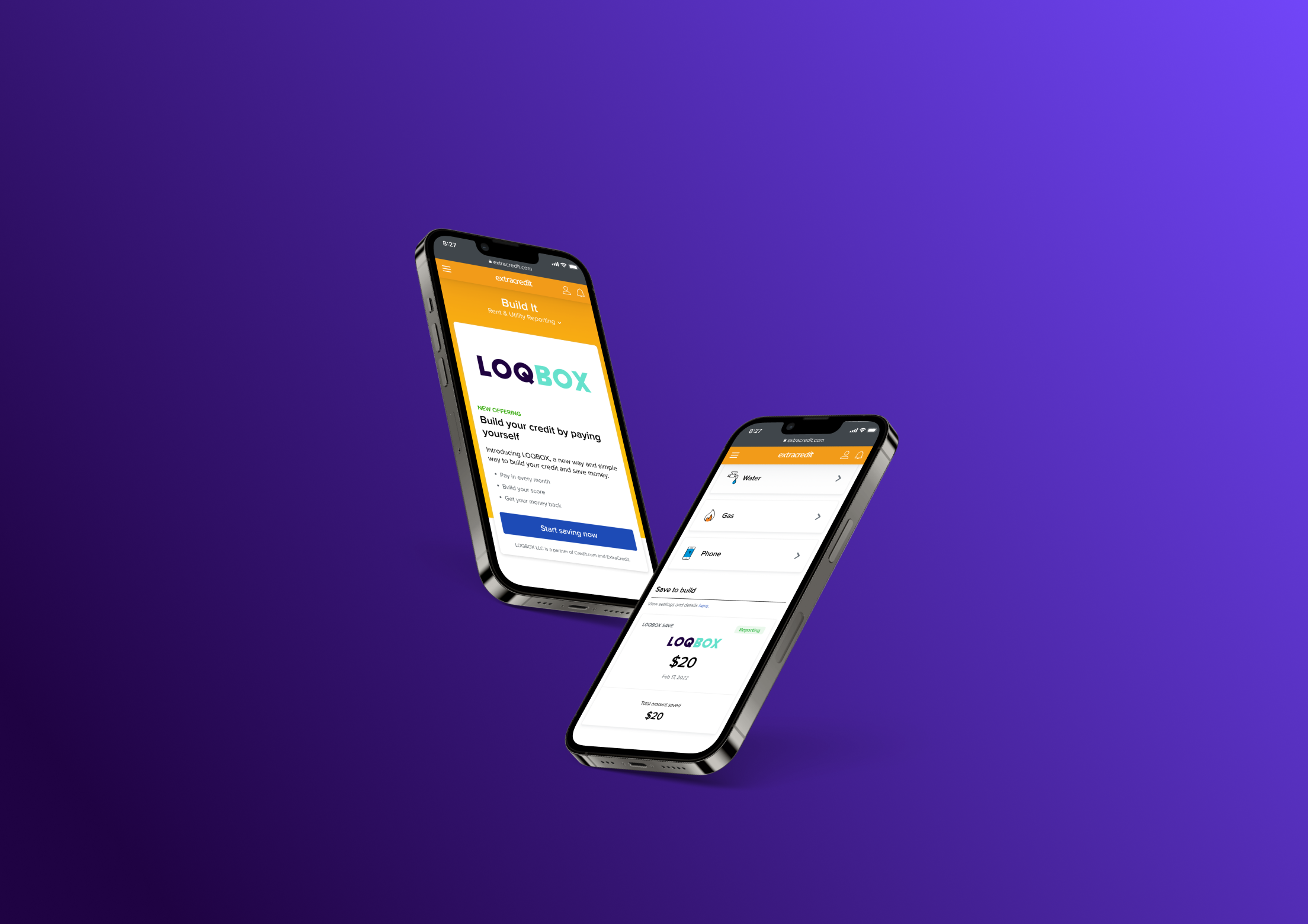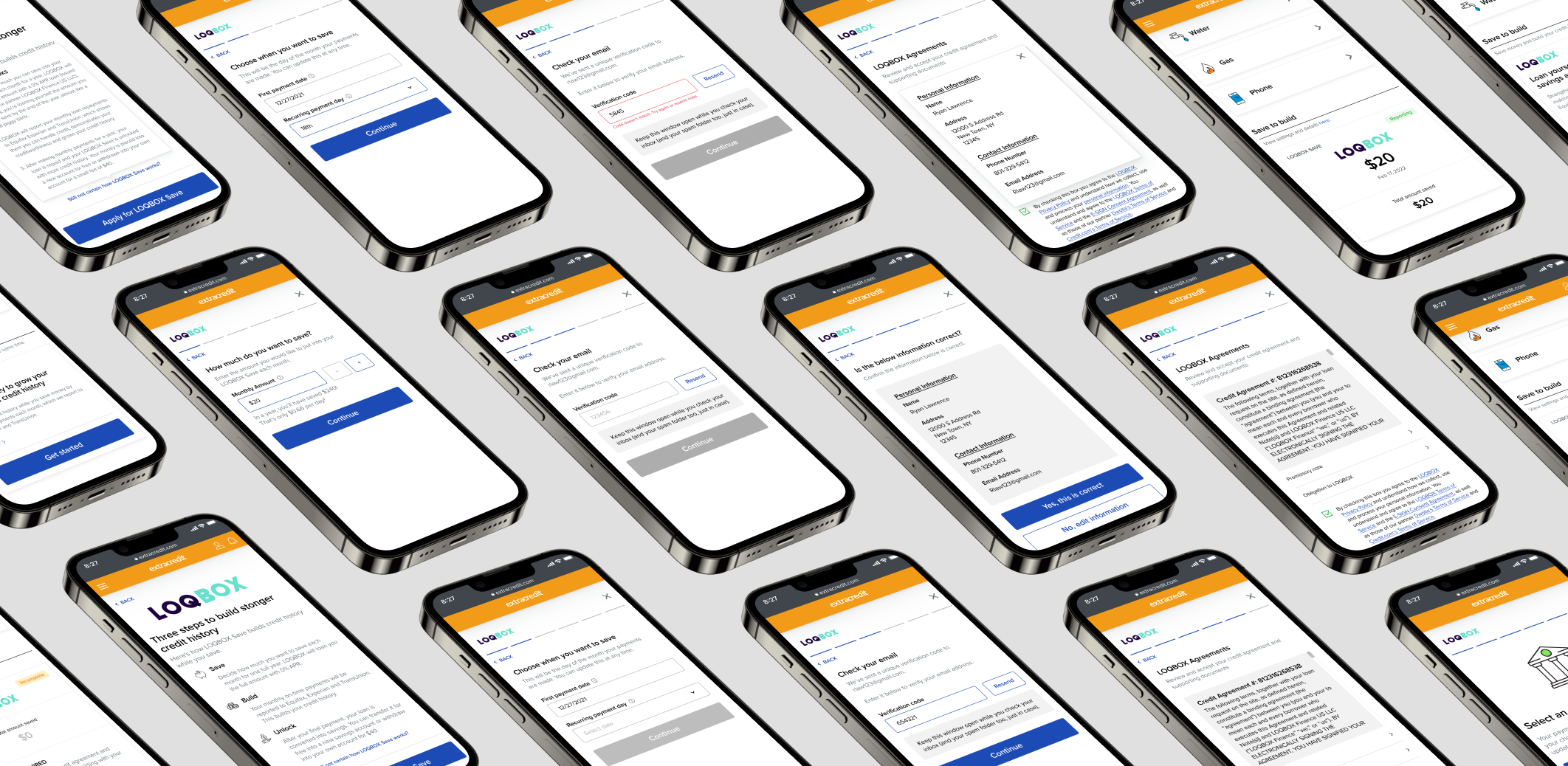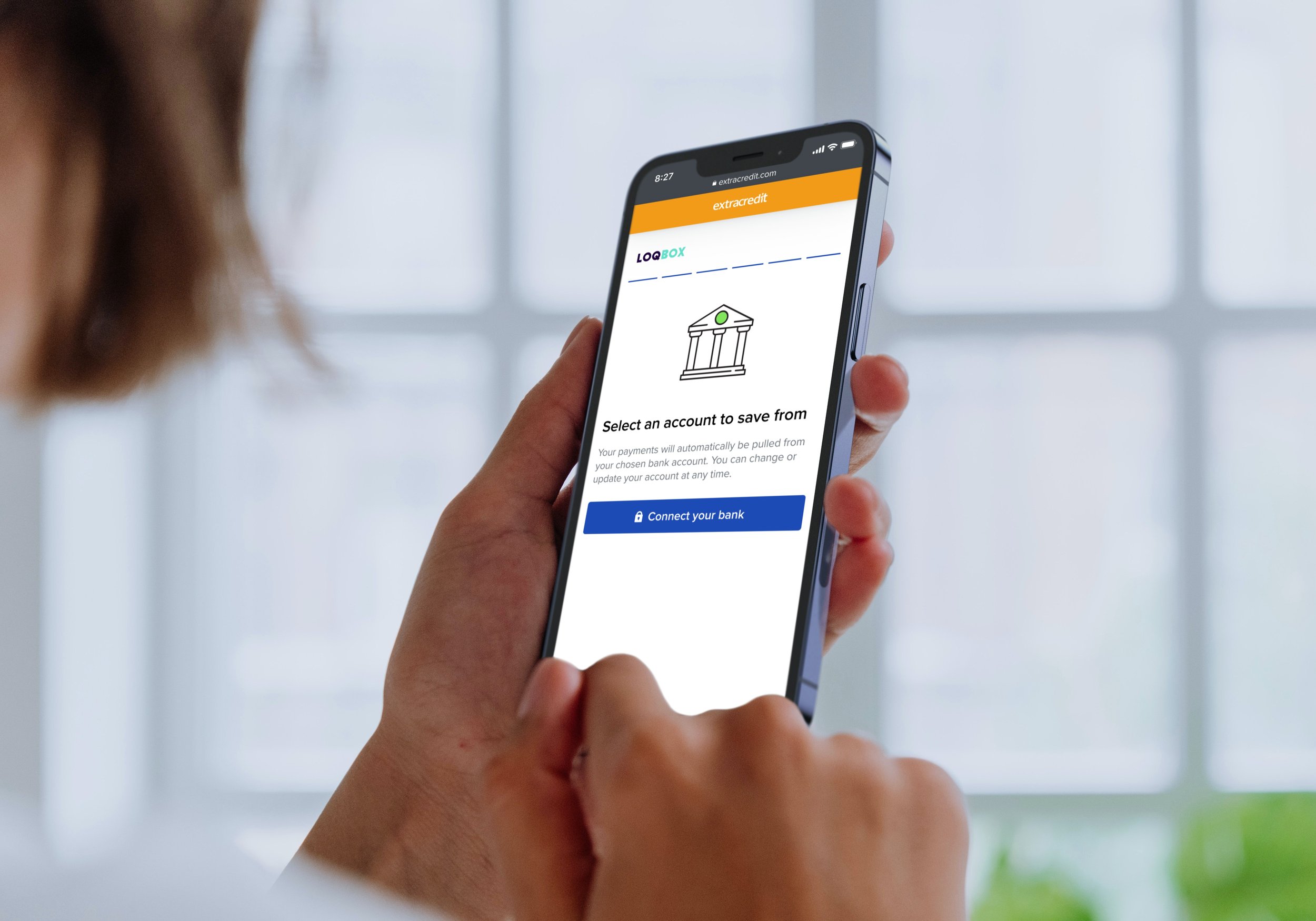
FROM FRICTION TO RETENTION: Extending EXTRACREDIT’S Subscriber LTV
— ExtraCredit by Credit.com gives unmatched credit coverage in one product. Designed to help people better understand and improve their credit.
It shows reports and scores from three major bureaus (Equifax, Experian, and TransUnion) and provides alternative methods to improve credit scores.
The feature set also provides $1M in ID theft protection, tailors offers based on credit standing and shows the impact of negative items on credit scores.
Project DetailsRole
Lead UX/UI Designer (UX team of one)
Timeline
7 months
Skills
Content Design
Interaction Design
Product Marketing
Product Strategy
Product Thinking
Prototyping
User Research
UX Design
Visual Design
Project
Hybrid Web-App
Desktop + Mobile
Responsibilities
Design and align creative direction
Identify technical needs
Prioritize and resolve risks
Validate assumptions with user testing
Provide support throughout production
Define key performance metrics to monitor for future enhancement opportunities.
01—06Project Overview
— Integrating LOQBOX Save
ExtraCredit partnered with LOQBOX to integrate their signup flow into the Build It feature, which provides users with alternative methods for improving their credit scores.
I led design efforts for globally distributed teams, drove the project from concept to launch in 7 months, and received an award for outstanding performance.
Problem“Why am I paying for this if I can’t use it?”
Credit.com’s Customer Service team informed us that Build It is a source of frustration for users who pay for the product but don’t pay rent and/or utilities and need to build their credit history through non-traditional means.
goalsBusiness
Create a cohesive experience when integrating LOQBOX
Increase customer paid life
Increase % of users reporting through Build It
User
Improve credit scores by building credit history
Show lenders good financial habits by reporting regular, on-time payments to the major credit bureaus
Defining successBuild a strong partnership and launch in 7 months
Since this was new for both organizations, we chose to define success for the overall project as launching the project and building a strong relationship between both teams.
solution + ResultSuccessfully launched integration in 7-month timeframe.
Collaborative efforts and consistent communication allowed us to successfully launch this integration while reducing average completion times by 40 seconds.

02—06The challenge
— Provide the Hardest Working Americans™ with the ability to save their way to better credit and improve their lives.
Target usersHardest Working Americans™
Our users span a broad spectrum of economic means. They have either experienced various financial hardships that have negatively impacted their access to credit or have inaccuracies on their reports, making them unable to secure the most attractive loan terms.
Needing alternative methods to improve credit scores
Traditional methods of building/strengthening credit reports include getting a new credit card, installment loan, mortgage, and auto loan—basically taking on additional debt.
A key characteristic of these users is the need to build & strengthen their credit reports through alternative methods without taking on additional debt.
Without reporting rent/utility payments Build It remains inactive
Business NeedsProvide new methods for users to receive value
ExtraCredit’s Build It feature only provides an alternative method to build credit history and improve credit scores for users making rent and/or utility payments.
To better serve the Hardest Working Americans™, Build It needed new methods to provide the same opportunity for users not currently making rent and/or utility payments.
Increase in user reporting = increase in paid life
The Credit.com data/analytics team identified a correlation between the longest-tenured paying users and users reporting at least one payment through Build It, increasing the business value of this project.
With this information, we focused our attention on achieving a high signup success rate for LOQBOX Save.
LOQBOX US homepage
partner needsBrand recognition in a new market
Expanding their services to Americans, LOQBOX fulfills this need with their Save product. The multi-award-winning business launched in the US in 2020 has already helped almost a million people master their money while they save and build their credit scores.
In this new market, a top priority was getting their identity in front of the Hardest Working Amercians™ to leverage their existing brand strength.
Removing steps based on information previously obtained from users
KnownReduce effort investment when collecting personal information
The first step when creating the integration concept was reducing the effort investment when signing up for a LOQBOX Save.
After analyzing LOQBOX’s current signup flow, I identified areas asking for information previously obtained from our users and removed those from the flow. This included name, email address, phone number, address, date of birth, and social security number.
unknownLegal & technical limitations when exchanging information via API
While ExtraCredit had users’ personal information, it was unknown if we could exchange it with LOQBOX via APIs. Working closely with Product Managers, Engineers, and Compliance/Legal teams from both companies, we validated this unknown variable and proceeded with the project.
Working in FigmaAligning globally distributed teams with a single Figma file
Prototypes were used early and often throughout this project to align the creative direction and team expectations. Figma played a key role throughout the entire project by providing a single source of truth and a communication channel for both organizations.
Try the interactive Figma prototype here
03—06User testing
— We believe that making the LOQBOX Save signup process simple for users to complete will result in a high signup success rate.
usability testingUncovering friction points with usability testing
Starting the project with a concept prototype allowed us to go into user testing early in the process. During baseline usability testing, we used a combination of qualitative and quantitative data to uncover friction points within the sign-up flow.
The two most important discoveries were:
Observing confusion during certain steps within the flow led to slow time on task rates per step.
Users struggled to understand the value proposition leading to decreased trustworthiness scores and confidence levels.
Implementing Insights
Reducing Cognitive load and time on tasks by increasing the number of steps
To reduce cognitive load, we increased the number of steps in the signup flow to isolate questions vs. grouping them. In follow-up tests, the overall time to complete signup was reduced by 40-sec.
Collaborating to clarify value
Working with Credit.com’s Director of Copy, LOQBOX’s Chief Marketing Officer, and Chief Product Officer, we reviewed recordings from the usability tests to inform new approaches for setting appropriate expectations and clarifying the value to be received. In follow-up tests, trustworthiness scores and confidence levels increased after completing the signup successfully.
LOQBOX Save Integration - Usability Test - SUS Score
TESTING resultsUsing data to improve the overall experience
The System Usability Scale is a reliable tool allowing us to evaluate the overall usability and learnability of an experience. Scoring in the 90-94th percentile was defined as success, and the benchmark test scored in the 85-89th percentile.
The last test scored in the 96-100th percentile, giving both teams high confidence in the flow was easy to go through, and the value proposition was easy to comprehend.
Sharing the knowledge early and often
I shared the results of these tests with both teams throughout the process. LOQBOX had not yet conducted usability tests in the American market, and our findings were instrumental in conversations where compromises from both sides were needed.
04—06The solution
— Collaborating to create a mutually beneficial experience
Build It - Pre LOQBOX™ Save signup
Addressing partner needs“Make it bigger and more prominent”
From the project's onset, a contentious point of agreement between both teams was how much of the LOQBOX identity elements should be in the experience. During the first two months, the feedback consistently pointed to adding more of their identity into our product for recognition purposes.
We determined the appropriate areas where the identity placement made sense for the user, not the business, through user testing feedback and multiple explorations. Moving forward with that approach would make both teams more successful with minimal risk of confusing the user.
Defining the main experience of Build It
The ExtraCredit team has a vested interest in making this partnership a success. Several explorations centered around promoting LOQBOX save throughout the product and in the main UI card at the top of Build It.
Talking with stakeholders, we determined Build It's main functionality would remain rent and utility reporting. This decision informed the information architecture of the Build It feature page and led us to place LOQBOX Save at the bottom of the feature page. It required renaming sections and slight changes to existing functionality. Working with our engineers, we found a successful solution.
updating design componentsUsing existing UI components for consistency
Initially, we set out to keep the LOQBOX Save reporting UI card similar to the existing rent and utility payment reporting cards. These quickly show users the reporting status, the amount, the date, numerical and visual representations of payments reported to the bureaus.
Modifying after technical constraints revealed
Roughly 3/4 through the project, it was discovered that LOQBOX’s APIs did not send the information needed to support the UI cards as designed. This required quick collaboration with developers to create a solution that did not increase the technical scope of the project.
Refining the experienceDefining new mental models
Through constant testing and refinement, we began to understand how to overcome the difficulties participants expressed when attempting to understand the mental model of “saving to build credit.” Although successful in the UK, Americans had trouble grasping the concept even when explained thoroughly.
Introducing iconography
To illustrate the concepts, we introduced iconography on the learn more page. Users received this so well that we have since added iconography to other sections of ExtraCredit that have longer explanations.
The final MVP signup flow
05—06The result
— After 7 months, ExtraCredit successfully introduced LOQBOX Save into its feature offering.
Final screens at launch
Defining MVPBuilding trust through collaboration
We came together to create a first-of-its-kind experience for both companies. Before this partnership, LOQBOX funneled users from their partners into their signup flow and environment, and ExtraCredit fully integrated another product for its rent and utility reporting functionality.
Both teams put users at the top of mind to create an MVP experience. Each team worked hard, and our efforts paid off with a successful launch.
putting users firstWhat’s best for the user is best for the business
Throughout the project, we went back and forth with the LOQBOX team on where users should be migrated into their environment. The initial concern from the ExtraCredit team was understanding how we get users back into our environment quickly. It was determined the end of the signup flow would be the best place to prompt the migration and LOQBOX designed a page that prioritized our need to bring users back quickly.
Implementing user insights
During testing, it became clear that users were confused about the next steps when shown the screen on the left. Thinking through the experience, I identified that at this point in the experience, it was most important to provide users with clear next steps and drive them into LOQBOX to create their password.
I presented the findings to both teams, and LOQBOX’s team quickly returned with the screen on the right. Follow-up tests showed that users were no longer confused at this point in the experience, leading to increased confidence levels.
Partial IntegrationSetting out to fully integrate the product, we learned the technical infrastructure wasn’t available
At the beginning of this project, the ExtraCredit team set a goal to create a cohesive experience when integrating LOQBOX Save into the Build it feature. We quickly learned from LOQBOX that creating the APIs necessary for a full integration would take a substantial investment and blow the timeline apart.
Quickly pivoting, we worked together to identify the maximum amount of the product that could be integrated.
Compromising for mutual success
Both sides determined we would achieve the best outcome by focusing on integrating the signup flow while keeping the rest of the functionality in the LOQBOX environment. Users would see reported payments in ExtraCredit, but anything else dealing with their LOQBOX account would require them to log into LOQBOX’s environment.
Keeping the project's technical scope in mind, we created a solution that added another page to the My Account section that would house all information and links for LOQBOX. This approach followed pre-existing patterns for adding feature information to this section of the ExtraCredit experience while allowing direct paths into the LQOBOX environment based on the user’s desired action.

06—06Next Steps & Learnings
Plaid micro-deposit stop-gap interstitial
— Focus on setting up future iterations for continual success by tracking user behavior, and listening to the expertise of others.
Next StepsMonitor the 80%
To launch the project on time, we focused on serving 80% of the users with the MVP flow. For the next steps, we are monitoring the success rate, retention rate, and drop-off points to look for additional improvement opportunities.
Address the remaining 20% as needed
Right before launch, it was discovered that less than 10% of users would need micro-deposit validation (required by Plaid) before being allowed to sign up for a LOQBOX Save account. This information is only revealed once a user has gone through the entire signup process.
Without time to implement the appropriate solution for these users, we created an interstitial stop-gap solution to mitigate the frustration of not being told why they couldn’t successfully sign up.
LearningsPeople matter more than the getting to the “right” answer
A big part of the success of this project was listening and making other people’s ideas come to life through mockups and prototypes. Being open to collaborating and making changes/concessions in real-time truly made others feel respected and valued.
UX + Technical flow overlays
During retrospectives, engineers discussed how it would have been helpful to collaborate on overlaying the technical flows, data transfer, and API calls onto the UX flows.
This was not something we have had to do in the past with engineers and the feedback was well received.



